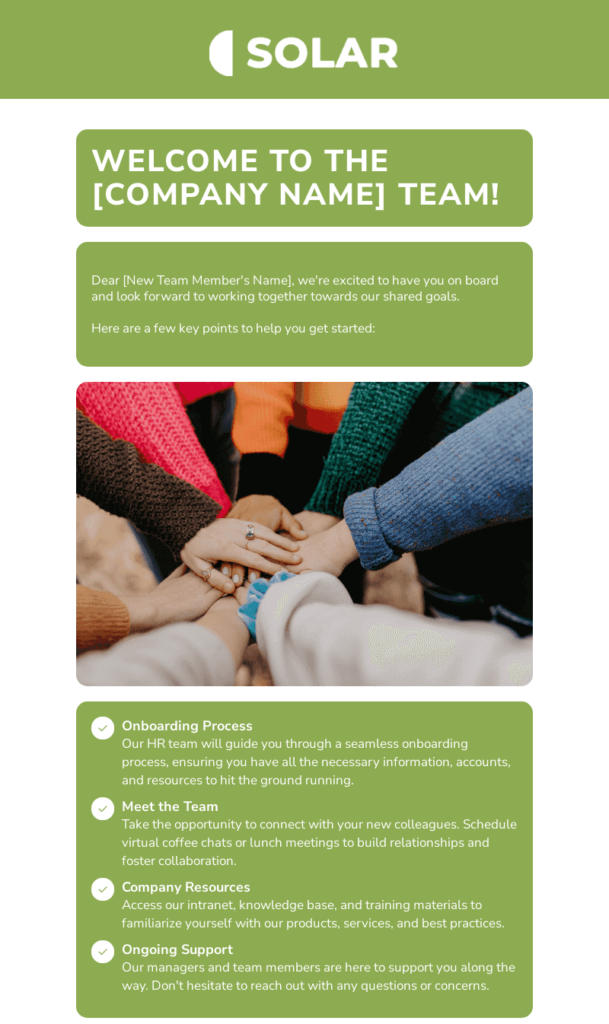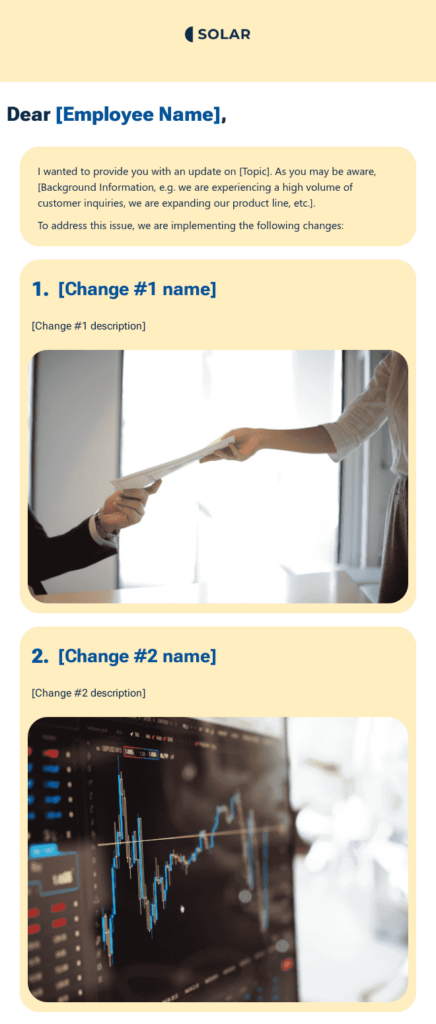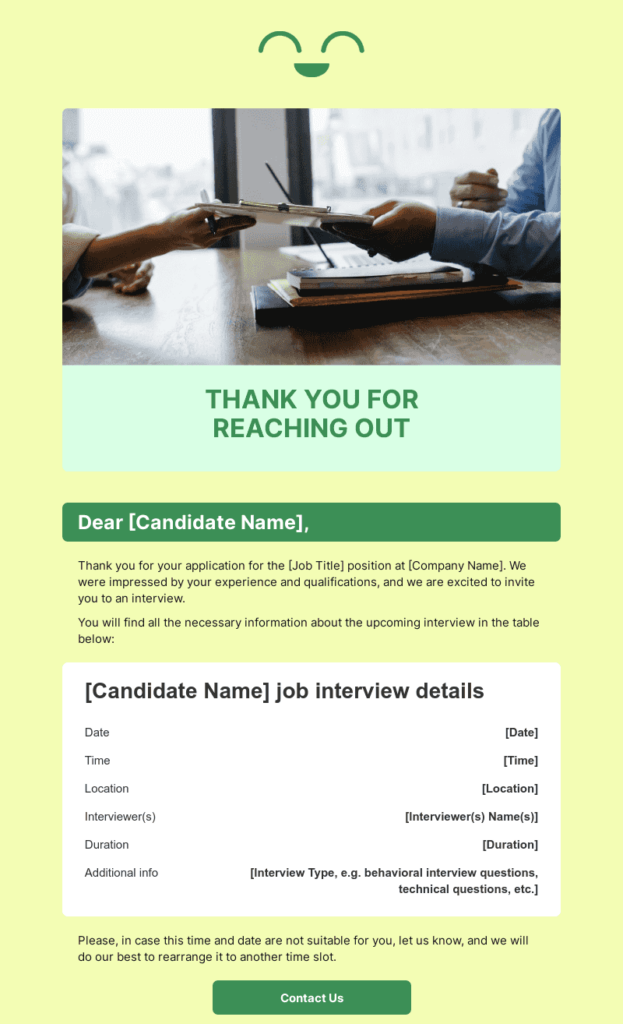A Guide to Crafting and Using Internal Communication Templates
Effective communication within a business is like the bloodstream of an organism – it ensures the smooth flow of information and keeps all parts functioning cohesively. One essential tool for fostering this communication is internal communication email templates. These templates serve as a structured framework to convey information, updates, and announcements to employees within an organization.
In this article, we will explore the significance of internal communication email templates, the businesses that can benefit from them, tips for writing compelling copy, designing effective templates, and common mistakes to avoid.
Looking for an effective tool to create Internal Communication emails?
Give Blocks a try for free today
Understanding the Significance of Internal Communication Email Templates
Clear and concise internal communication is vital for organizational success. In a fast-paced world where employees are spread across different locations and time zones, effective communication becomes a linchpin that holds teams together. Internal communication email templates serve as a cornerstone of this process, offering consistency, efficiency, and professionalism.
These templates can be used in various scenarios, such as:
- Employee onboarding. Welcoming new team members with a well-structured email template that includes an introduction, company values, and key resources.

- Announcements. Sharing important news, updates, or policy changes that affect the entire organization.

- Project updates. Keeping teams informed about the progress of ongoing projects, including milestones achieved and upcoming goals.
- Training and workshops. Inviting employees to training sessions, workshops, or webinars to enhance their skills.
- Recognition and rewards. Acknowledging employee achievements, milestones, and contributions.
- Reminders and deadlines. Sending reminders about upcoming deadlines, meetings, or events.
- Surveys and feedback. Collecting feedback from employees through surveys and using templates to present results.
- Holiday greetings. Sharing seasonal greetings and messages to foster a sense of community.
Need inspiration for your Internal Communication emails?
Check out Blocks template gallery!
Crafting Compelling Copy for Internal Communication Email Templates
Effective internal communication starts with well-crafted email copy that engages employees and conveys information clearly. Here are some tips to consider:
- Personalization. Address employees by their names and personalize the message according to their roles or teams. This adds a human touch and makes the communication more relatable.
- Clarity. Be concise and to the point. Clearly state the purpose of the email in the subject line and opening paragraph.

- Relevance. Tailor the message to the recipients’ needs and interests. Consider how the information will impact their work and address any potential concerns.
- Engaging tone. Use a friendly and approachable tone while maintaining professionalism. Avoid jargon and complex language that might confuse readers.
- Call to action. Clearly outline any action steps required from the recipients. Whether it’s attending a meeting, filling out a survey, or completing a task, make the next steps evident.
- Visual elements. Incorporate visuals like images, infographics, or icons to break up the text and make the email more visually appealing.
- Consistency. Maintain a consistent style and voice across all internal communication emails. This establishes familiarity and builds trust with recipients.
- Mobile compatibility. Many employees access emails on mobile devices. Ensure your email templates are mobile-friendly for a seamless reading experience.
Designing Effective Internal Communication Email Templates
The design of your internal communication email templates plays a significant role in how well the information is received. Here’s how to design templates that are visually appealing and user-friendly:
- Simple layout. Keep the layout clean and uncluttered. Use headings, subheadings, and bullet points to break up the content and make it easy to scan.
- Branding. Incorporate your company’s branding elements, such as logo, colors, and fonts, to maintain a consistent visual identity.
- Whitespace. Use ample white space around text and images to create a sense of balance and make the content more digestible.
- Readable fonts. Choose fonts that are easy to read, both on desktop and mobile devices. Stick to a maximum of two font styles for a polished look.
- Visual hierarchy. Emphasize important information using hierarchy techniques like bold text, larger fonts, or contrasting colors.
- Images and icons. Use relevant images and icons to illustrate key points. Visuals can make the content more engaging and help convey complex information.
- Responsive design. Ensure that your templates are responsive and adapt well to different screen sizes. This guarantees a positive user experience across devices.
- Footer information. Include contact information, links to relevant resources, and an unsubscribe option if necessary.
Common Mistakes to Avoid
While internal communication email templates can greatly enhance communication, there are some common mistakes to watch out for:
Lack of Personalization
Sending generic emails that don’t address the recipient’s needs can lead to disengagement.
Overwhelming Content
Providing too much information in a single email can lead to information overload. Stick to the key points and use links for additional resources.
Ignoring Feedback
If employees consistently provide feedback about the templates, take their suggestions seriously and make necessary improvements.
Inconsistent Branding
Failing to use consistent branding elements can create confusion and dilute the company’s identity.
Neglecting Mobile Compatibility
Many employees check emails on their smartphones. Neglecting mobile compatibility can result in a poor user experience.
Ignoring Analytics
Most email platforms provide analytics. Use these insights to understand how well your templates are performing and make data-driven improvements.
Overlooking Accessibility
Ensure your templates are accessible to individuals with disabilities by following accessibility guidelines.
Conclusion
Internal communication email templates are a powerful tool for fostering effective communication within organizations. They provide a structured framework for conveying information, updates, and announcements to employees. By personalizing copy, paying attention to design, and avoiding common mistakes, businesses can optimize the impact of these templates. Whether it’s welcoming new team members, sharing important news, or acknowledging employee achievements, well-crafted email templates can streamline communication, enhance engagement, and contribute to a more cohesive and informed workforce.
Boost your Internal Communication templates with Blocks!
Sign up now to craft your effective Internal Communication email templates!